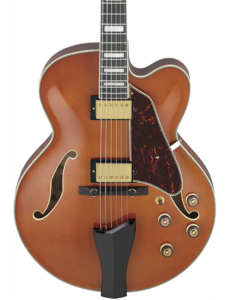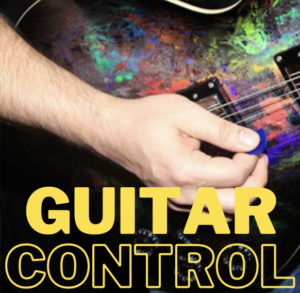 Being able to read guitar chords is a very important skill for any guitarist. If you play pop, rock, blues, jazz, samba, or even classical guitar, it is important skill to have.
Being able to read guitar chords is a very important skill for any guitarist. If you play pop, rock, blues, jazz, samba, or even classical guitar, it is important skill to have.
By learning guitar chords, you can play accompaniment for most song by just reading the chord notation.
In this article, I present an overview of how to read guitar chords quickly, with some exercises that will make it much faster for your to read chords.
Learning to Read Guitar Chords
Reading guitar chords may seem daunting at first, but after some quick practice you will start to find it easy and practical.
You just need to understand the basics of chord notation, and how to translated this information into guitar chords. After a while, this process will become second nature for you.
Learning About Chords
 The first step to understand chord notation is to learn the basics about chords. A lot of people have no clue about chords are formed, in this makes it very difficult to learn to read chords.
The first step to understand chord notation is to learn the basics about chords. A lot of people have no clue about chords are formed, in this makes it very difficult to learn to read chords.
On the other hand, learning about the basics of chords will give you a great basis to determine how such a chord can be constructed.
Also Read:
Soloing Over Chords on a Minor Pentatonic Scale
20 Best Guitar Chords for Beginners
The 1 4 5 Chord Progression for Guitar
Defining Chords
 A chord is a set of music notes that are played at the same time.
A chord is a set of music notes that are played at the same time.
In western culture, chords are created by stacking thirds. This means that we can start with a note, then skip the next node of the scale, and get the next node, which is a third.
So for example, starting with F, you have F,A,C. This immediately tells us that this is a major chord.
Similarly, if you get an A chord that has notes A,C,E, then you just need to look at the second note. It is a minor third, thus the chord is a minor chord.
The Parts of a Chord Notation
 Chord notation can be explained using the different components of a chord.
Chord notation can be explained using the different components of a chord.
The first component is the name of the tonic of the chord. For example, the G chord has as first component the note G. The F#m7 chord has as first component the F# chord.
The second component will tell you if the chord is minor or major. For example the Am7 chord has the letter m as second component to indicate the resulting chord is minor.
The third component determines the extensions of the base chord. These extensions normally indicate the degrees of the scale that can be added to the chord.
For example the B7 chord has a base note (B) and an extension note indicated by the number 7. The seventh note is a common extension note, and is used to provide a “preparation” for the tonic.
Determining Chord Positions
 You have a lot of freedom to determine the position of a chord from a chord symbol.
You have a lot of freedom to determine the position of a chord from a chord symbol.
First, you need to determine the position of the guitar fretboard where you’re more familiar. For that, there are several options as the same notes can be played in different parts of the guitar neck.
However, you need to try and practice these different regions of the guitar to increase you familiarity to all kinds of chords. You will dominate the instrument only when you know well how to find chords in these different areas of the guitar.
Specific Example of Reading a Guitar Chord
 Let’s now look at and example. Consider then the Gm11 chord. The first information we have is that is a chord based on G.
Let’s now look at and example. Consider then the Gm11 chord. The first information we have is that is a chord based on G.
Then, the second element of information is that the chord is minor. Thus, the next note used in this chord in Bb, because if is a minor third above the G note.
To complete the chord, you have the 5th (which is implicit on a minor or major chord). Therefore, we know that D is another note in this chord.
Finally, you have the extension note 11. This means that you’re adding an 11th interval to the chord. In this case, the 11th is a C note.
To determine the right position, remember that the 11 is the same as the 4th in terms of used notes. Thus, the 11 extension corresponds to the C note, when building the Gm11 guitar cord.
Reading Guitar Chords
There are several ways to read guitar chords, but one of the easiest methods is to use chord diagrams. A chord diagram is a visual representation of a chord that shows you exactly where to place your fingers on the guitar fretboard.
Here’s how to read a chord diagram:
The horizontal lines represent the guitar frets, with the top line representing the nut and the bottom line representing the highest fret.
The vertical lines represent the guitar strings, with the leftmost line representing the thinnest string (high E) and the rightmost line representing the thickest string (low E).
The black dots on the diagram show you where to place your fingers on the fretboard. Each dot represents a finger, with the index finger being 1, the middle finger being 2, the ring finger being 3, and the pinky finger being 4.
The numbers on the dots indicate which finger to use. For example, if there is a “1” on the first dot, you would use your index finger to fret that note.
The X symbol means that you should not play that string.
By following the chord diagram and placing your fingers on the correct frets and strings, you can easily play the chord. Once you get comfortable with reading chord diagrams, you can start to learn different chords and progressions to expand your playing abilities.
Learn More About Guitar Playing
To get more in depth coverage of guitar topics, I have developed a free guitar course that can be yours for free. Just make a request and this course will be send to your email address immediately.
